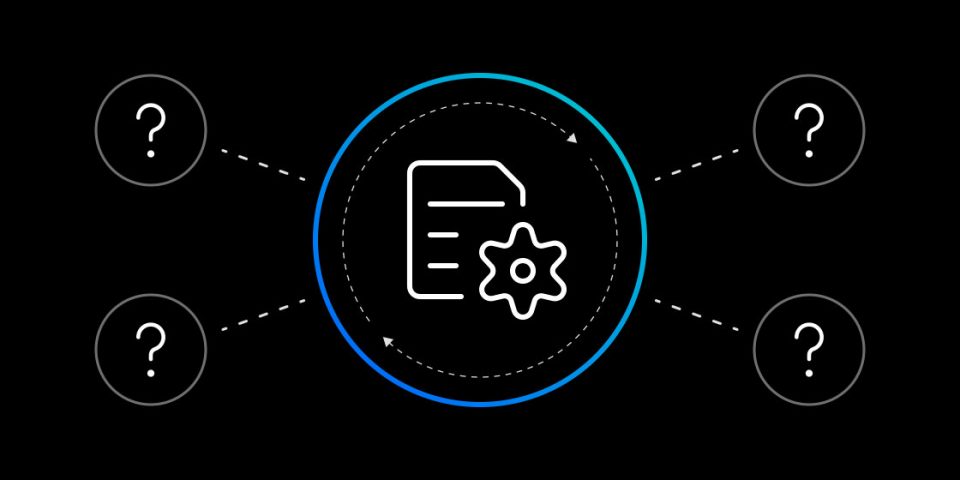What’s the difference between intelligent process automation (IPA) and hyper-automation?
In today’s rapidly evolving digital landscape, three key technologies have risen to prominence: Intelligent Process Automation (IPA), Hyper-automation, and Intelligent Document Processing (IDP).
Each offers distinct advantages, all united by a shared objective: to revolutionize and automate business processes, enabling organizations to function at optimal efficiency and deliver unparalleled value.
Jun 08, 2023 by Automation Hero

Consider IPA as an advanced scholar with the capability of automating and enhancing tasks, while continuously learning and adapting. Hyper-automation, on the other hand, can be seen as an adept orchestrator, coordinating a spectrum of sophisticated technologies to construct a harmonized network of interconnected, automated processes. Lastly, visualize IDP as an adaptable interface, integrating seamlessly with existing automation tools, augmenting their functionality, and extending their applications.
Keep in touch
In this analysis, we will delve into the specifics of these significant components of automation. We will explore their individual capabilities, their unique roles in the broad context of business automation, and how platforms like Automation Hero’s IDP can bridge the gaps and create synergies between these varied forms of automation, thereby constructing an intelligent and robust automation ecosystem.
Exploring Intelligent Process Automation (IPA)
Intelligent Process Automation (IPA) refers to a collection of new and legacy automation technologies coming together to manage, integrate, and automate efficient business processes. IPA combines new technology, such as artificial intelligence (AI), with traditional automation technologies like Robotic Process Automation (RPA), to go beyond the limitations of legacy software automation tools.
This combination of technologies not only automates routine tasks similar to traditional RPA “bots,” but also adds a “cognitive” feature to RPA that allows it to learn and adapt to evolving circumstances. For businesses seeking an efficiency boost, IPA can be a powerful tool. IPA incorporates elements of Machine Learning (ML), Natural Language Processing (NLP), and AI, creating a more sophisticated system that can streamline and enhance existing business operations.
IPA incorporates elements of Machine Learning (ML), Natural Language Processing (NLP), and AI, creating a more sophisticated system that can streamline and enhance existing business operations.
IPA works harmoniously with existing tools to provide businesses with insights enabling proactive decision-making. IPA also facilitates the automation of more complex tasks than standalone RPA robots can automate, freeing human workers to focus on tasks that require creativity, critical thinking, and a human touch.
Businesses across sectors are leveraging IPA to achieve operational excellence. From optimizing customer service with more intelligent bots to enhancing supply chain management with predictive analytics, IPA is transforming how businesses operate. However, like any other technology, the implementation of IPA also comes with its challenges, including data privacy concerns, the need for workforce re-skilling, and the requirement of significant upfront investment.
Despite these challenges, the benefits of IPA often outweigh the costs. Companies implementing IPA successfully have reported higher operational efficiency, improved customer satisfaction, and significant cost savings. With continuous technological advancements, IPA will continue to become more accessible and beneficial for businesses of all sizes.
Unraveling hyper-automation
Hyper-automation is an implementation strategy and a giant leap forward compared to IPA. As a strategy, it seeks to automate as many business and IT processes as possible, creating a network of automated tasks that work in orchestration to interact with each other seamlessly.
Similar to IPA, hyper-automation encompasses a range of intelligent and traditional automation tools, including Intelligent Document Processing (IDP), Robotic Process Automation (RPA), business management software, and AI. However, the main intent of a hyper-automation strategy is to automate every business process that can be automated in an organization.
Central to hyper-automation is the idea of orchestrating multiple automation technologies to work together and create a more integrated, streamlined, and sophisticated system. This approach aims to eliminate silos, enhance the scalability of automation efforts, and maximize the return on investment.
Businesses across various industries are deploying hyper-automation to enhance their operational efficiency and agility.
Businesses across various industries are deploying hyper-automation to enhance their operational efficiency and agility. By combining different automation technologies, companies can create a more resilient and adaptable infrastructure better to meet the demands of the rapidly evolving digital economy.
Despite its potential, hyper-automation also has its challenges. It requires a significant investment in technology and skills, as well as a comprehensive change management strategy. However, for those companies that can navigate these challenges, hyper-automation offers an opportunity to transform their business processes and achieve a significant competitive advantage.

The role of intelligent document processing (IDP)
IDP sits at the intersection of several key technologies and has emerged as a critical component in the broader automation landscape. In short, IDP uses artificial intelligence to process and manage documents efficiently. By using IDP, businesses can streamline document-heavy processes, reduce manual labor, and improve accuracy.
One of the key benefits of IDP is its ability to integrate seamlessly with other automation tools, such as RPA. This ability to ‘play nicely’ with existing technologies allows companies to augment their current automation strategies, enhancing the overall efficiency and scope of their operations.
This ability to ‘play nicely’ with existing technologies allows companies to augment their current automation strategies, enhancing the overall efficiency and scope of their operations.
Automation Hero’s full-service IDP platform is an excellent example of this end-to-end integration capability. With a keen focus on complementing and enriching existing automation systems rather than directly competing with them, Automation Hero’s Hero Platform_ offers organizations the flexibility and agility needed to scale up their automation.
Hero Platform_ uses an Application Programming Interface (API) to transform existing systems, software, and databases into a “business intelligence fabric.” Our industry-leading native AI is built into the platform, so it can intelligently process any document, providing a valuable service within a wider automation strategy.
Automation Hero’s vision is to complement and coexist with broader automation strategies. This philosophy is fundamental to our approach to automation and the value we aim to bring to our customers.
IPA, Hyper-automation, and how IDP factors in
IPA, Hyper-automation, and IDP share a fundamental goal: to streamline business processes, boost efficiency, and reduce the potential for human error. They leverage common technologies like artificial intelligence and machine learning to automate tasks that traditionally required human intervention. This use of technology represents a significant shift from traditional business process management, emphasizing the ever-increasing role of digital technology in business operations.
All three aspire to automate tasks, but they each apply technology in unique ways to achieve this. From IDP’s focus on document-centric business processes to IPA’s workflow automation system and Hyper-automation’s comprehensive, enterprise-wide approach, each offers a unique take on automation.
While IDP and IPA are examples of automation technologies that can operate independently, their true power is realized when used in tandem.
While IDP and IPA are examples of automation technologies that can operate independently, their true power is realized when used in tandem. For example, IDP systems like those offered by Automation Hero can integrate seamlessly with existing IPA and RPA systems, enhancing their efficiency and expanding their operational scope.

Distinguishing IPA, hyper-automation, and the uniqueness of IDP
Though IPA, Hyper-automation, and IDP share common objectives, they differ in several key aspects. IPA focuses on automating specific business processes and incorporates a degree of machine learning and decision-making into older, legacy automation software tools. In contrast, Hyper-automation seeks to automate as many processes as possible across the business and uses a range of technologies to achieve this goal.
While IDP can certainly automate document processing tasks, its real strengths lie in its ability to enrich other automation technologies and transform unstructured data into business value.
IDP occupies a unique position within this landscape. Rather than competing with existing automation technologies, it integrates your existing software automation tools to enhance their functionality. Since IDP plays nicely with other tools, it can augment your existing RPA robot with the AI/cognitive capabilities you need. While IDP can certainly automate document processing tasks, its real strengths lie in its ability to enrich other automation technologies and transform unstructured data into business value.
These differences in focus and approach reflect the varying degrees of sophistication, autonomy, and scope offered by each of these automation strategies. They underscore the value of having a diverse automation portfolio and highlight the potential of technologies like IDP to contribute to this diversity.
Conclusion
IPA, Hyper-automation, and IDP each play a unique role in the evolving landscape of business automation. As businesses continue to grapple with the demands of the digital age, these technologies offer valuable tools for boosting efficiency, enhancing accuracy, and staying competitive. Companies can choose between these tools depending on their specific needs, resources, and strategic objectives.
As we move into the future, we can expect these technologies to continue to evolve, offering even greater potential for automation and efficiency. With the ability to integrate and augment other automation technologies, IDP solutions like Automation Hero will play a critical role in this future, helping businesses navigate the complexities of digital transformation and achieve their automation goals.
With the ability to integrate and augment other automation technologies, IDP solutions like Automation Hero will play a critical role in this future, helping businesses navigate the complexities of digital transformation and achieve their automation goals.
To learn more about how Automation Hero can augment your current automation strategies with its IDP solutions, please visit our website or contact us directly. We welcome your comments, questions, and discussion on this topic. Let’s explore how we can work together to bring the benefits of automation to your business.
Unlock the intelligence in your business documents with our AI-driven automation today
Learn how we helped Markerstudy reduce its claims processing time by 40%. Additionally, learn how we reduced total claim processing time by 80% for another multinational insurance partner — cutting down manual tasks from 10 minutes to just two minutes per claim.
Speak with an expert — tell us about your specific use case.
Get a personalized demo — schedule a demo, and our Heroes will get in touch!
Close Window
Automation Hero will track how you use the emails (e.g., at what time you open which part of the emails) sent by Automation Hero. If you have provided a separate declaration of consent that cookies for tracking your usage of the website and/or apps may be placed on your device, Automation Hero will also connect the information about your use of Automation Hero’s websites and apps (e.g., which information you open) collected by the tracking cookie to such information in so far as possible. Automation Hero will analyze such information, to identify your interests and preferences and to communicate with you in a more personalized and effective way, e.g. by providing information that you are likely interested in, like information on new technologies or products of the Automation Hero group that are likely relevant to you.
